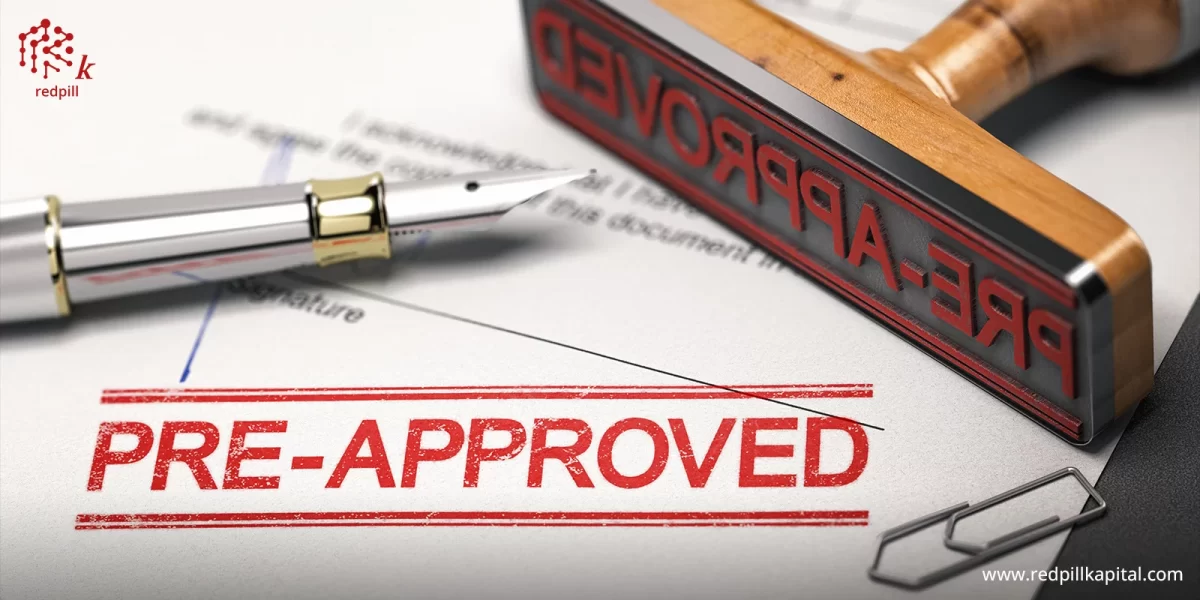I Thought I Would Share The Exact Questions I Get Asked As A General Partner, Which Are The Same Questions I Ask Of People That I Invest With Who Are General Partners. I Invest In Other People’s Deals, And I Have My Own Deals, And I Want To Share The Commonality Of Questions That Are Super Important To Ask. I’m On Both Sides, And I Want To Share This Information.
Real estate is the most powerful way to accumulate wealth. More people have become millionaires through real estate than any other means. We know how to find the property, create a plan for improving the cash flow, negotiate the deal, and manage the asset. Your passive investment provides you with the opportunity to earn an income without the nine to five. We create a unique business strategy that fits your financial and investment goals. Get the financial freedom you need to do more of what you love. We are Red Pill Kapital, with a K.
How Long Have They Been Actively Engaged In Real Estate Investing?
I want to vet the general partner. I want to figure out how long they’ve been engaged in real estate investing.
• Did they just start a year or two years ago, or have they been in this for 20 years?
• What’s their track record?
• What’s their experience?
I want to look at their comparative analysis of this offering versus other offerings, look at an analysis of the things that they’ve actually completed, and look at their actual results delivered.
I want to know what they offered before and what the result was from that offering. In other words, what was their pre-offering package, and what was their final result? I want to get a copy of their previous deal. I want to get a copy of their investor communication that they’ve provided, because more than likely, how they communicated with other investors is how they’re going to communicate with me.
I want to know how long they’ve been doing syndication. I want to know what their investment strategy is. Is their strategy to just kind of shoot everywhere, or are they a highly refined sniper? Both things are good. You could have a wholesaler that was buying houses, and that might be one way to approach it – not the way that I would approach it. You could have a targeted sniper that looks at hundreds and hundreds of potential real estate deals or targets, but then picks the one out that’s super important and super necessary.
I Want To Know About Their Strategy.
• Does it correlate with the current and future market conditions?
• Can they describe their strategy?
• Can they describe how the macro trends affect their hyperlocal neighborhood, where this specific piece of real estate is?
• Do they understand what’s going on with this local neighborhood and how the job trends are going to make a difference?
I Want To Ask Them Before I Do Their Background Check:
Is there anything negative that they want to discuss with me? Is there anything negative they want to disclose? I pay very close attention to the vocabulary that people use and their style of communication. That vocabulary is going
to determine how clear and standardized they are and how their verbiage is going to come out, because if they’re not clear with me, and they’re not using standard vocabulary in the real estate vernacular, then there’s going to be a problem, because they’re not going to be able to deal with the banks. This might be their way to learn, and I don’t want to pay for people’s education.
That doesn’t mean that people don’t make mistakes. It doesn’t mean that things won’t happen.
What It Means Is I Don’t Want To Pay For Somebody Else’s Education.
I want to know if what they’re telling me is a fact or it’s an opinion, or if they’re mixing opinion as if it’s fact. Everything has a rational basis underneath it, but do they understand what that rational basis is, or are they just opening? I want to make sure that they’re using industry-standard metrics, not something that they made up, not something that they think they can derive.
I Need To Know What Locations Do They Invest In?
• Do they invest in the location that this project is in, and why are they investing there?
• Are they investing there because there’s a demographic reason?
• Are they investing there because they heard this was a good place from their buddy Joe, and they’ve listened to some real estate shows and everybody says, «Austin is hot, so I’m going to Austin»?
I want to know how well they know this hyperlocal environment that they’re currently investing in. Do they have a team that’s ready to undertake the investment? That doesn’t mean that
they have to have a team that has a general partner with an attorney, an inspector, a loan broker, insurance broker, and property management. All of those things can be hired out, but is it assembled? Is it ready to go? Do they have an attorney? Have they specified out who the inspector’s going to be?
• Have they picked out the loan broker?
• Do they have a relationship?
• Have they talked to an insurance broker?
• Have they even talked to somebody who’s going to help on the taxes? Because who knows?
In certain areas like Arizona, once you buy a property, your tax rate may go up a few percentage points, whereas if you buy a property in Texas, it may go up a few hundred percentage points.
Really, the functionality is to make sure that they’re prepared for this, and that they’ve anticipated this. Not all the team members are part of the general partnership. Some are just simply independent contractors.
• If there’s going to be major construction, have they identified the team that’s going to do the construction?
• Have they identified the rehab budget?
• Who’s going to manage that construction?
• Has that construction management cost been built into this?
• Has a pro forma that matches the construction, that’s specifically going to determine the cash flow, been done on a monthly basis, rather than some sort of nebulous percentage basis of the whole year?

Because the reality is you can’t take a percentage basis to the bank. What you can do is take the monthly income to the bank, so you need to know exactly what your pro forma is going to be per month – not as a global number, like an IRR, you need to know what the cash flow’s going to be. Cash flow you can deposit. IRR you can only look at.
I want to know what asset classes do they regularly invest in and what grade of asset. If they invest in multifamily, which makes sense, but they only invest in grade A, and this is a grade C, I don’t think they’re going to do as well, because what they’re going to try to do is take a grade C and upgrade it to a grade A, and that’s never going to happen. You might be able to get to a
grade B-minus, but you’re never going to get to a grade A, and you’re just going to spend a ton of money for nothing.
If they’re used to grade C, and they’re buying a grade A, they probably may not have the skillset to deal with the grade A tenants, because grade A tenants have a much higher need basis, and you’re basically creating an experience
for them in which you take care of things. Grade C, not so much. You want to know how many years of experience do they have with a particular asset class and how many years of experience in this grade of asset.
I Want To Look At Their Credibility
Are they going to put their own money in the deal beyond the acquisition fee? A lot of times all they’re putting in is the acquisition fee, which is the money that you’re putting in, and the acquisition fee might be 3 to 5 percent of the deal. It might be 7 percent of the deal. Just depends on the deal. But if that’s all of the money that they’re putting in, they’re not putting in anything. They don’t really have anything to lose.
Yeah, they spent a lot of time. They may have looked at a lot of projects, but I want them to feel the pain of failure if there is failure. I want to know: have
they ever had a deal gone bad? I don’t invest with people that have never had a deal gone bad, because a deal gone bad creates a whole different feeling and creates a whole different set of skills for the syndicator.
I want to know if they’re sponsoring other investments. How many other investments? Where are they at? Because I don’t want their attention overly diverted. That doesn’t mean that they can’t do other investments, but I need to know how much of their bandwidth of time is going to be spent on this investment, because this is the one that’s important to me. Can they give me names and contact information of past or current clients? Can they provide contact information for other investors so I can talk to them for a reference?
Credibility Questions
• Do they put their own money into the deal, beyond the acquisition fees?
• Did they ever have a deal go bad? If so, how did they handle it?
• Are they sponsoring any other investments? If so, how many?
• Can they give you the name and contact information of their past/ current clients?
• Can they provide contact information for other investors, that you can speak to them from a reference?
Deal Structure
I need to know what the deal structure is.
• Is there a preferred rate of return?
• Is there a waterfall?
• What’s the split?
• How do we structure this deal?
• Do they change the split between the general limited partner after a certain threshold?
It might be 70/30 going in, but then it might become 50/50, and you need to understand that.
• Are they only allowing accredited investors in, or is it also sophisticated?
• How are they making that decision that they allowed certain sophisticated investors in? Because that could impact the entire investment.
• How many key principles do they have?
• If there are no other partners, what’s going to happen if the investment goes south? Because if there’s only one general partner, and something happens to that one key person, everything is going to go south.
• What are their sponsor fees?
• How long are they usually holding an asset for?
• What’s their investment strategy?
• Is this a value-add?
• Is this a buy and hold?
• Is this a value-add with an intended refinance?
• What are we doing here?
• Where are we going to?
I want a map that tells me exactly what they’re actually thinking. If they can’t describe this to me in probably two or three sentences, they haven’t thought hard enough about this. This investment strategy is an elevator pitch – it should be that refined.
Reputation Search
I Will Always Do A Reputation Search
That might include just a simple online search looking for complaints. I want to look for positive comments. I want to look for negative comments. I want to do a UCC background check. I want to do a criminal background check. I want to check if they’re a prohibited party from the Securities and Exchange Commission.
I want to look for references on social media about this specific syndicator.
• Are they on a podcast?
• Do they have other websites?
• Do they have YouTube channels?
The more web presence they have, the less likely that they are going to be anonymous, and more collateral information is available that keeps them from behaving poorly later. I want to know if I can discuss this offering with one of my trusted advisors. More likely than not, I’m going to have to sign an NDA to make sure that everything is okay.
I want to contact the syndicators’ past or present colleagues or employees, and I want to know what their opinion is. I want to ask details about the past deal that the syndicators handled.
Legal Documents
When I look at the documents, I want to make sure that they’re professional – that they’re legal, they’re accurate, they’re complete. For me, they have to come over by DocuSign or one of the other electronic means. If they’re sending me paper, I kind of wonder about that, because in this day and age, that’s highly unusual. I want to make sure that all the documents are there, and that they look professionally prepared – that there’s not any typos in there.
I want to make sure that it’s an actual syndication attorney that signed off on this and not just some online tool that they’ve used to create a private
placement memorandum. I want to analyze the property, the market, the major employers in the area, the location, and the proximity to shopping centers and employment hubs. That should be described all in the offering memorandum.
I want to cross-validate it later, but I want to make sure that’s in there.
I want to review their pro forma and their underwriting and their hold period, and I want to determine for myself if this is conservatively written. Has this been stress tested? If need be, I’ll use a third-party underwriter to validate. Using a third-party underwriter to validate a plan, to validate somebody’s pro forma, is a very cheap insurance policy and can save me a ton of heartache later. Typically, this runs about $2,000 by the time that I’m done.
When I’m getting my offering memorandum, I want to make sure it was professionally prepared, that it’s not full of typos and mistakes. I want to make sure that it’s concordant with the property. I want to make sure it hasn’t been copied.
When I Deal With People, I Want To Know:
Is this a pressure situation? Because if this is a pressure situation, it is possible that they’re making a mistake. I want to make sure that there’s been plenty of time for me to analyze it and that I’m getting the appropriate amount of attention that I need in this deal. Are they answering my questions, or are they brushing me off?
I Want To Make Sure That They Understand My Particular Situation, My Goals, And My Needs. What Does That Mean?
Well, if I’m investing with an IRA, it means something totally different than if I’m investing with my own cash. If I’m investing for a five-year horizon, and this is a ten-year opportunity zone project, I’m not in the right deal. You can’t manipulate an opportunity zone project for ten years and expect to make a five-year return.
I Want To Know:
is this a pressured sale, or was this a pressured piece of information that they’re putting out? How many other deals did they look at before they selected this one to present? Did they look at three deals and this is the one? Because usually I find that, at minimum, I’m looking at 20 to 40 deals, and sometimes
a lot more, to find one that is worth analyzing. I want to make sure that they’ve verified, that they’ve evaluated, other similar assets of similar grade in a similar demographic. I want to know why they rejected those deals.
Pressured Sales?
• Is the deal sponsor giving you enough time and attention?
• Are they answering all your questions?
• Do they understand your situation, goals, needs?
• How many deals did they look at before they selected this one to present?
The Actual Deal
When you actually get to the deal, and you look at the market comps that are provided by the syndicator, you want to make sure that it’s in the right neighborhood. If you look at the market comp, and it’s plotted out, and it’s from two miles away, it’s probably not the same neighborhood. So, that’s not reliable. There are all kinds of online tools that you can use to validate a particular neighborhood.
You Want To Look At Their Projections Of Those Market Comps, and are they in line with neighborhood comps, not from something two miles away? I
guarantee you that if you invest in St. Louis, and you’re investing in University City, which I’ve invested in, if you go two blocks, you’re in a hellhole. If you go two blocks in the other direction, you’re in the business district, and the cost differential in housing is that one side sells for 40,000 and the other side sells for 400,000. One side rents for $350 a month, and the other side rents for
$1,800 a month – and they’re within blocks of each other.
You want to make sure that the overall offering makes sense in terms of the returns and the duration of the syndication. You want to make sure it makes sense for this particular syndicator and their background and the proposed plans. You certainly wouldn’t put up a high rise in the middle of farmland, so you want to make sure that this specific plan makes sense.
• Have they stress-tested this deal?
• Have they looked at what would happen on this deal if you went to historic vacancy rates – 30 percent vacant?
• Would they still be able to pay debt service?
• What would happen if taxes jumped 150 percent?
You want to look at the reversion cap rates. That’s what would happen to the value at a particular net operating income if the cap rate goes up.
Let’s say that you’re buying at a cap rate of six and you’re going to sell in five years. I usually increase the cap rate by 0.2 percent per year. So I’m looking at a reversion cap rate of seven, and then I want to know what it is for value. You also want to know if and who the lender is that’s underwriting. If it’s Freddie Mac and Fannie Mae, then it’s probable that you have additional eyes on this loan, because Freddie Mac and Fannie Mae have amazing underwriters. Those are the people that I use to underwrite my deals, and I think it’s very important to have that level of underwriting because it means the deal will stand on its own. Freddie Mac and Fannie Mae do not lend you money unless this deal is going to stand on its own.
You want to look at your cash-on-cash return. You want to look at your equity multiple. You want to look at your average annualized return, and the bank wants to look at your debt service coverage ratio. If your debt service coverage ratio is below 1.2, this is a no-go deal. If my average annualized return is below 7 percent, for me, that’s a no-go deal. If my equity multiple is not at least 1.9, this is a no-go deal.
I want a cash-on-cash return that’s significant. I don’t want to do deals that I’m not going to make a decent return on because I know what I can get in the market, and so I want to be very careful. When I look at the actual deal, I also want to impute what the depreciation value is to me, specifically.
The Actual Deal
• Evaluate the market comps that the syndicator has provided. Are the target rents competitive for this neighborhood in this grade property?
• Are the projections in line with the comps?
• Does the overall offering make sense in terms of returns, duration, syndicator integrity and background, and proposed plans?
• Have they stress-tested this deal? Vacancy rates? Taxes?
• What are the reversion cap rates?
• Is this a loan being underwritten by Freddie or Fannie?
• What’s the COC, Equity Multiple, Average Annualized Return, DSCR?
Thoroughly Understand The Capital Stack And Distributions

Equity Distribution
• Equity split at refinance or sale
• Asset management fees before or after pref
• Catch-up clause
• Refinance contingency
• Waterfalls
You have to understand what the capital stack is, so I’m going to just go over what a full capital stack is because I think it’s relevant. When you buy a piece of property, a portion of it is going to be equity and a portion of it is going to be debt. The debt is what you’re going to get from the bank. There are two levels of debt: senior debt and mezzanine debt.
Senior debt is the debt on the property if you’re not doing a rehab, so let’s just take an example. Let’s say that you’re going to buy a property.

Of that 70 percent debt, if there’s a rehab in it, it’s likely that about 50 percent of that is senior debt, and the other 20 percent is mezzanine debt. It’s a lender that is not going to give the full amount of money. It’s going to be at a slightly higher interest rate, and they’re second in line should anything bad happen. But if there’s no significant construction, then the whole thing is going to be senior debt.
So you’ve got 30 percent left that you have to raise equity for. The preferred equity gets the preferred return. The common equity gets the non-preferred return. The preferred equity is you; you’re the limited partner. So you’re going to get a split, and it could be a 70/30 split, or it could be a 50/50 split, or some combination thereof.
Inside that preferred equity, there’s usually a percentage. The first 6 percent goes to the preferred equity, and then it’s equally split, so you want to take a look at those numbers very closely. I usually map out my full capital stack. I usually just take this diagram and I put it down on paper so I can visually interpret this.
• What’s the mezzanine debt?
• What’s the senior debt?
• What’s preferred equity?
• What’s the common equity?
This is the easiest way for me to figure out exactly who’s going to get what, and what my expectations are going into this.
Then, when you look at the equity distribution – and you need to look at the equity split – what’s going to happen if it refinances versus sells? A lot of places, a lot of folks, will do an equity split at refinance or sale of 70/30, but if they’ve refinanced it, and you’re still in the deal, then the subsequent part is usually 50/50. It’s difficult to tell, but you’ve got all your money back, so for you it’s an infinite return anyway. Really, the ongoing risk is to the syndicator.
So, you want to take a look at that equity split at refinance or sale. You want to look at those asset management fees. Do they come out before or after pref? I’ve seen it done both ways. I think it’s very reasonable to do it before, and I’ve seen it very reasonable to do after. Most of them are done before the preferential payment.
There’s also something called a catch-up clause. The catch-up clause is we had enough money to pay the asset management fee. We had enough money to pay the 8 percent pref or the 7 percent pref, but we didn’t have enough money to do an equity split at all. So next year we do the same thing, and the next year we do the same thing. Eventually, the general partner catches up at the time of sale.
It’s very important to know whether there’s a catch-up clause or not. You want to know about any refinance contingencies. You want to know about waterfalls. Waterfalls are shifts in percentage based upon particular targets. There might be waterfalls because of construction. There might be waterfalls because you hit certain numbers. These are additional kickers. It’s very important to understand them.
So What’s My Process?
My average time to preliminarily analyze a deal is about four to six hours. I have people, though, that help me. I’ve got two full-time paralegals. We’ve got a full-time attorney. We have an in-house financial analyst, and we outsource our Freddie Mac underwriting for an extra look at deals that have gone forward.
I look at the people first. I look at the syndicator first. Then I look at the general demographics of the area, specifically looking for jobs. Then I look at the hyperlocal environment of the particular deal, and then I look at the deal. I don’t get to the deal until I’ve vetted the people and I’ve vetted the demographics. I’ve looked at the hyperlocal environment, then I look at the deal, and the least important thing that I look at is the entry cap rate.
People always talk about, “Oh, so-and-so has this cap rate. So-and-so has that cap rate.” Almost all of my deals are value-add. So what I’m looking for is not the entry cap rate. I’m looking for the exit cap rate, and I’m looking at the net operating income. Based upon the net operating income, that’s going to drive my value. I look at that delta between current net operating income and anticipated net operating income. That’s my value-add because that’s going to drive that value up.
I rebuilt the entire pro forma. I don’t want to use unintended math errors that might be hidden in a formula in their pro forma. So I basically copy the rent roll. I look at the T12, which is the last trailing 12 months, and I also look at the T3. I copy out all of the data, and I apply the rule of thumbs to costs. I want to make sure that I’ve done my own independent pro forma.
If my preliminary analysis is good, then I usually go visit the site. If I have to visit the site, that’s me adding about another 24 to 36 hours into my analysis. I don’t need to visit every single unit in the site, but I need to get a feel of it. I don’t invest remotely.
Last 6 Months Of 2019
Passive Investment
per 17 Offers (total received 51 offers, 43 different syndication groups)
6 Preliminary analysis
2 Site visits
1 Investment
did 3 passive investments last 6 months
added 17 syndication groups to my no-fly list
Active Direct Investment
>150 properties analyzed (actual site visits on 19)
4 offers made (full due diligence)
1 purchased and closed
In the last six months of 2019, in my passive investments, per 17 offers, I received basically 51 offers in 43 different syndication groups. From these 17 offers, I had six preliminary analysis, I had two site visits, and I had one investment. So it went from 17 to 1. I’ve basically done three passive investments for the last six months, and I added 17 syndication groups to my no-fly list.
These are 17 syndication groups that sent me offers, and I did the preliminary analysis on the people in the syndication group, and they had significant red flags. I know that I don’t have to reanalyze their deals. I might wait a year or two and let them back into my group to fly, but for the next year or so they’re locked out. I’m not even going to bother looking at their offers, because there’s something in there that I’ve identified in that particular group or those particular people that’s super dangerous.
It could be an SEC violation. It could be a pending bankruptcy. It could be a bunch of UCC liens. It could be some other criminal behavior. So, they go on my no-fly list so I don’t have to analyze them again. When I look at my
active direct investments, I looked at over 150 projects. I did actual site visits on 19 of them. I made four offers, and then did full due diligence with those four offers. I purchased and closed one. Greater than 150 down to 1, versus passive investment 17 down to 1.
Final Thoughts
Syndications are long-term prospects. You really need to understand the people that are in the syndication, because most syndications are going to outlast the average marriage in the U.S., which is about 8.2 years. The average syndication deal is between five and nine years right now. If you’re investing in an opportunity zone, that’s a minimum 10-year hold, which definitely outlasts the average marriage in the United States.
You’re creating a contract and offering memorandum. You’re looking at disclosures. You’re looking at PPM. These are all just the prenup to the marriage. The longer the syndication, the higher the risk, the greater the mischief that can go wrong, and the less likely that that prenup will even apply.
You want to make sure that there’s always a contingency plan to remove a bad actor. You don’t want to be stuck with a bad syndicator, and you don’t want to get bamboozled by beautiful graphics and beautiful pictures that somebody’s put together. I want the data. I want the math. The pictures are nice, but they don’t mean much. I can’t eat a picture. I can’t put a picture in the bank. I want to know what the cash flow is that’s associated with these beautiful graphics and pictures and how I’m going to get that into my bank.

Again, it’s a combination of the syndication team, the demographics, the hyperlocal environment, the actual deal, making sure it’s stress tested, looking at the exit, and how does it interact with my specific situation?
If You Need Help Underwriting A Deal, Let Me Know. Just Send Me An Email: Info@Redpillkapital. Com. If You Need Us To Help You Underwrite A Deal, It’s Pretty Cheap. It’s About $1,900, But That’s Not Specific, Because Some Deals Are Very, Very Complicated. But $1,900 Is Really Cheap Compared To Getting Into A Really, Really Bad Marriage.
Now this doesn’t mean that we’re going to go do a site visit for you, because that takes a lot more time, but at least we can help you with your underwriting and the reputation analysis research.
That’s one way to do it. But if you just have a couple of questions, that’s always free. Just email me info@redpillkapital, and just put in the subject line, call me. Give me your number, and we’ll chat, because we want to help other investors. We don’t want people to go into bad deals.
So What’s Red Pill Kapital?
Red Pill Kapital is a physician-owned commercial real estate investment and education company. It allows you to invest passively alongside us. We find the property or we find the investment group. We create and validate their plan. We look at how to improve the cash flow. We negotiate the deal. We manage and oversee the asset. Your passive investment provides you with an opportunity to earn an income without the nine to five because physicians don’t work nine to five; we probably work six to nine. We create a unique business strategy that fits your financial investment goals because we understand the specific needs of physician professionals.
Is Red Pill Kapital Right For You?
Your passive investment provides you with an opportunity to earn an income without the nine to nine, because physicians don’t work nine to five. We probably work six to nine. We create a unique business strategy that fits your financial investment goals, because we understand the specific needs of physician professionals.
Are you looking to enhance your financial wealth and truly live the life that you deserve? Are you an accredited investor who’s interested in learning more about passively investing and cash flowing
commercial real estate? Are you interested in investing alongside us? Because we don’t need your money. What we’re trying to do is do bigger projects with more leverage, and the bigger the project, the less the risk because the leverage improves. We only make money if you make money. If you have any questions, please email me at info@redpillkapital.com and that’s Kapital with a K.
We search for value-added real estate for our passive commercial real estate partners, and we actively manage that investment long-term for a successful exit. We are Red Pill Kapital.
Find us at Redpillkapital.Com
www.redpillkapital.com
If you simply need more information. have questions, or want to discuss a specific deal, I’m always excited to help. Reach out to me at info@redpillkapital.com
If you are ready to start your journey to financial freedom but want specific additional educational materials, we have a course designed for physicians.























